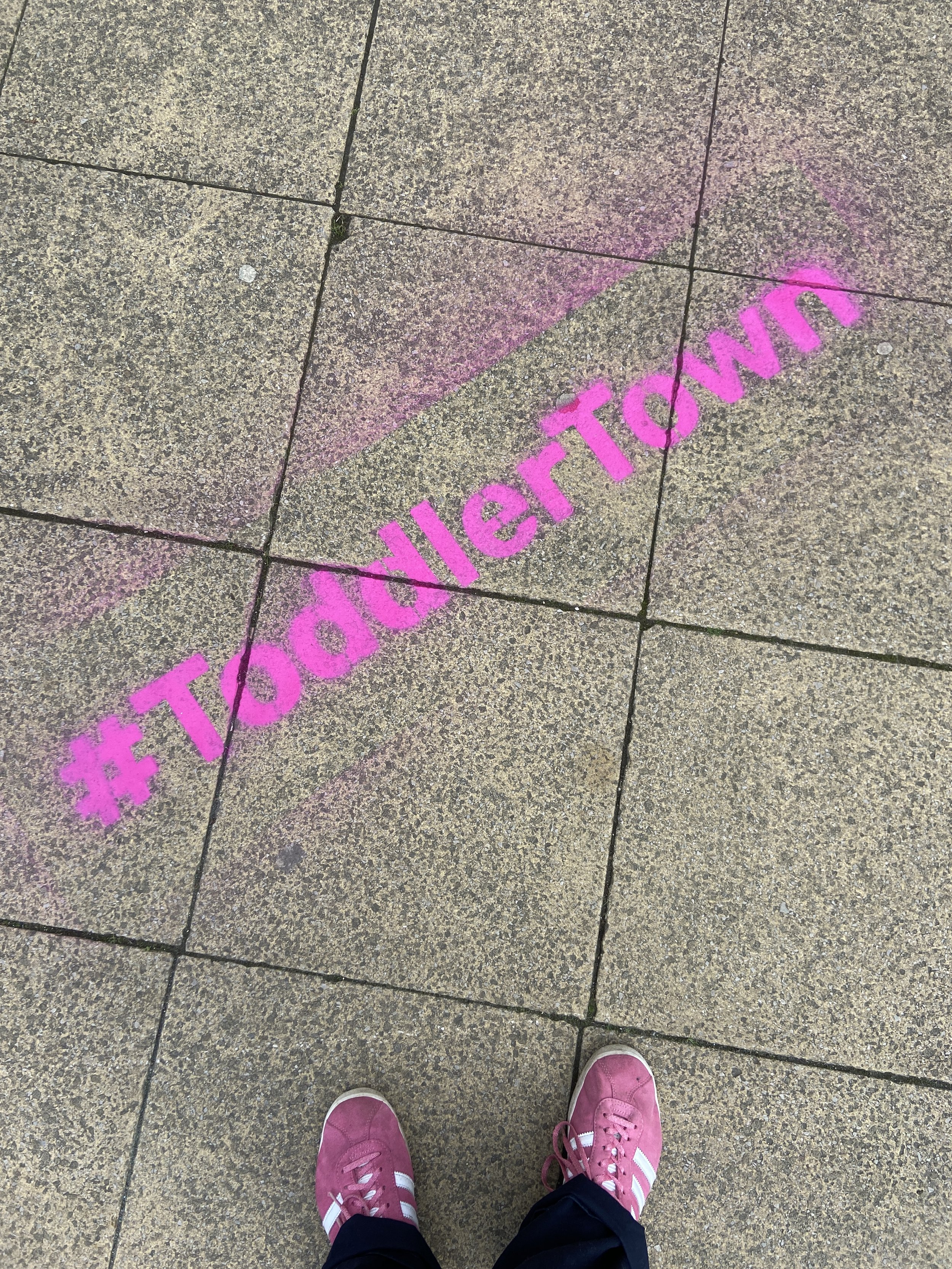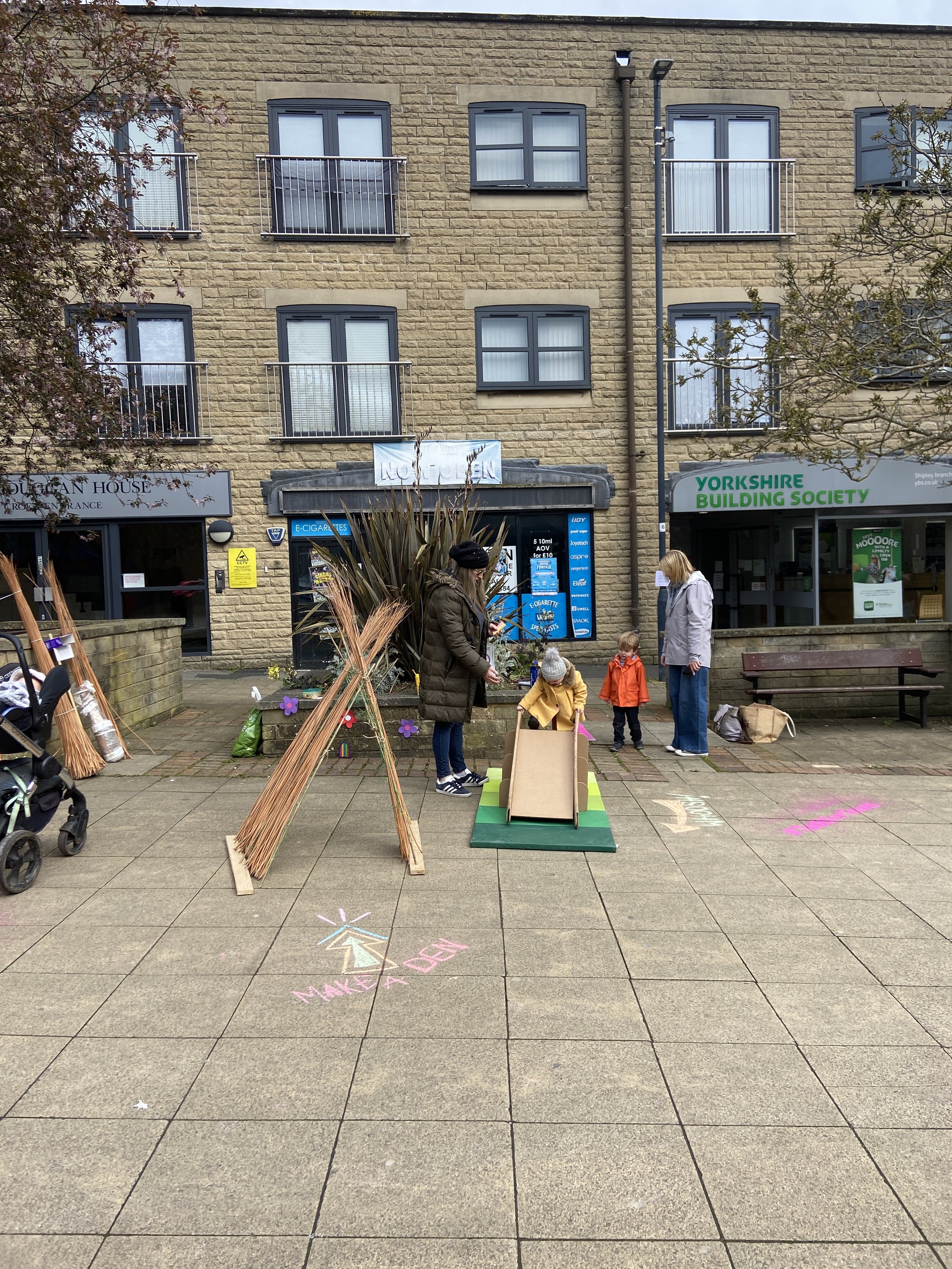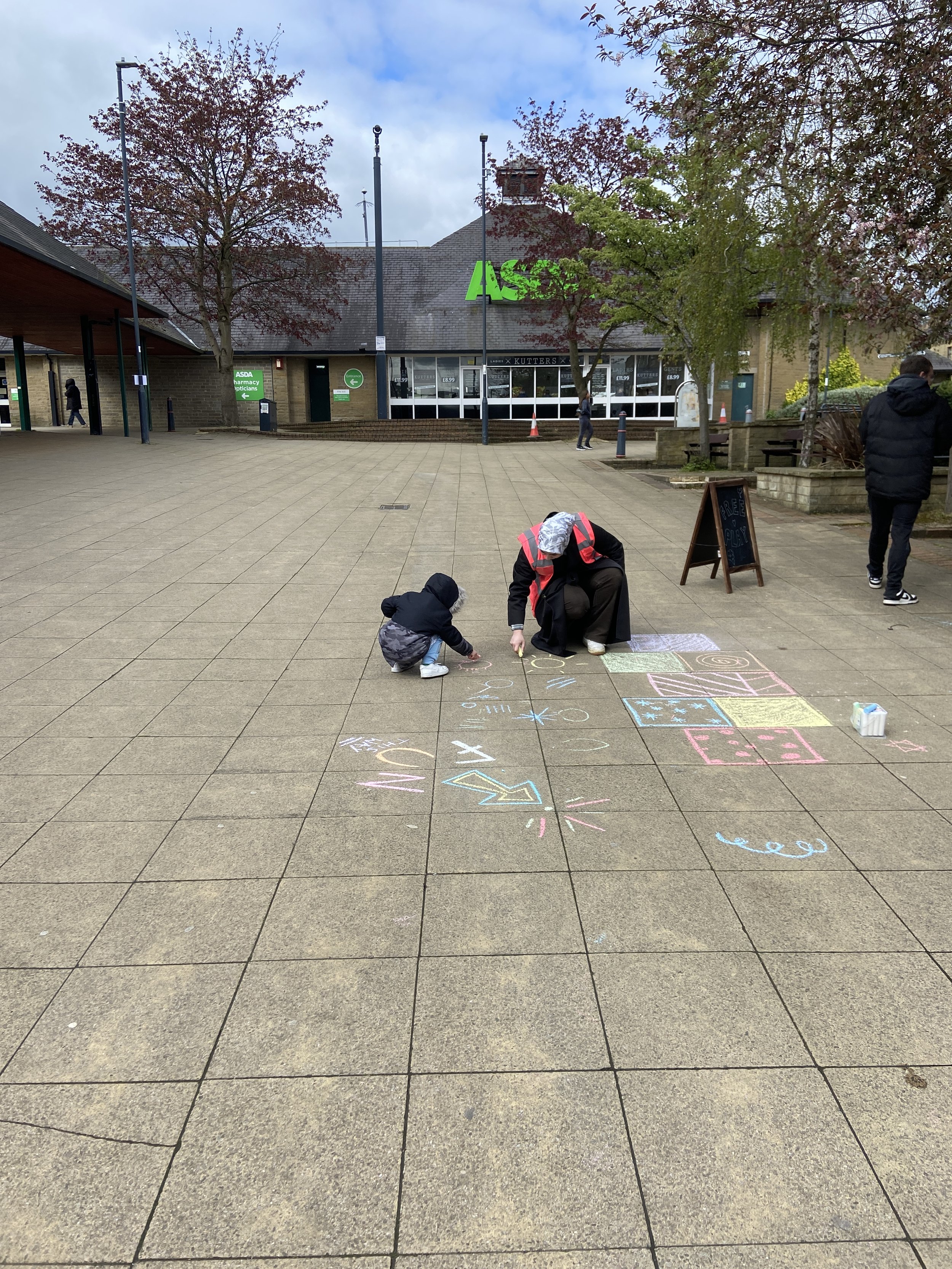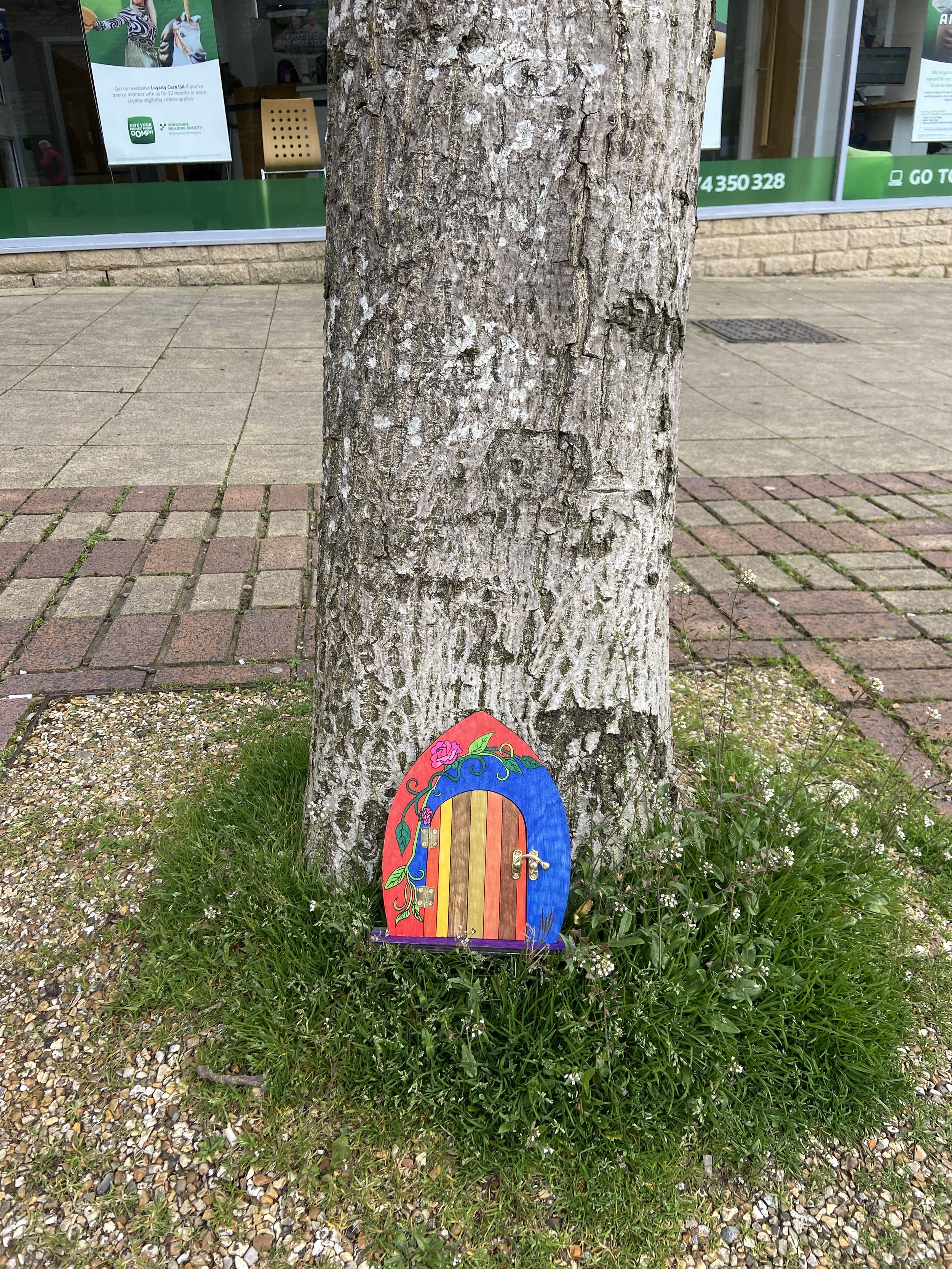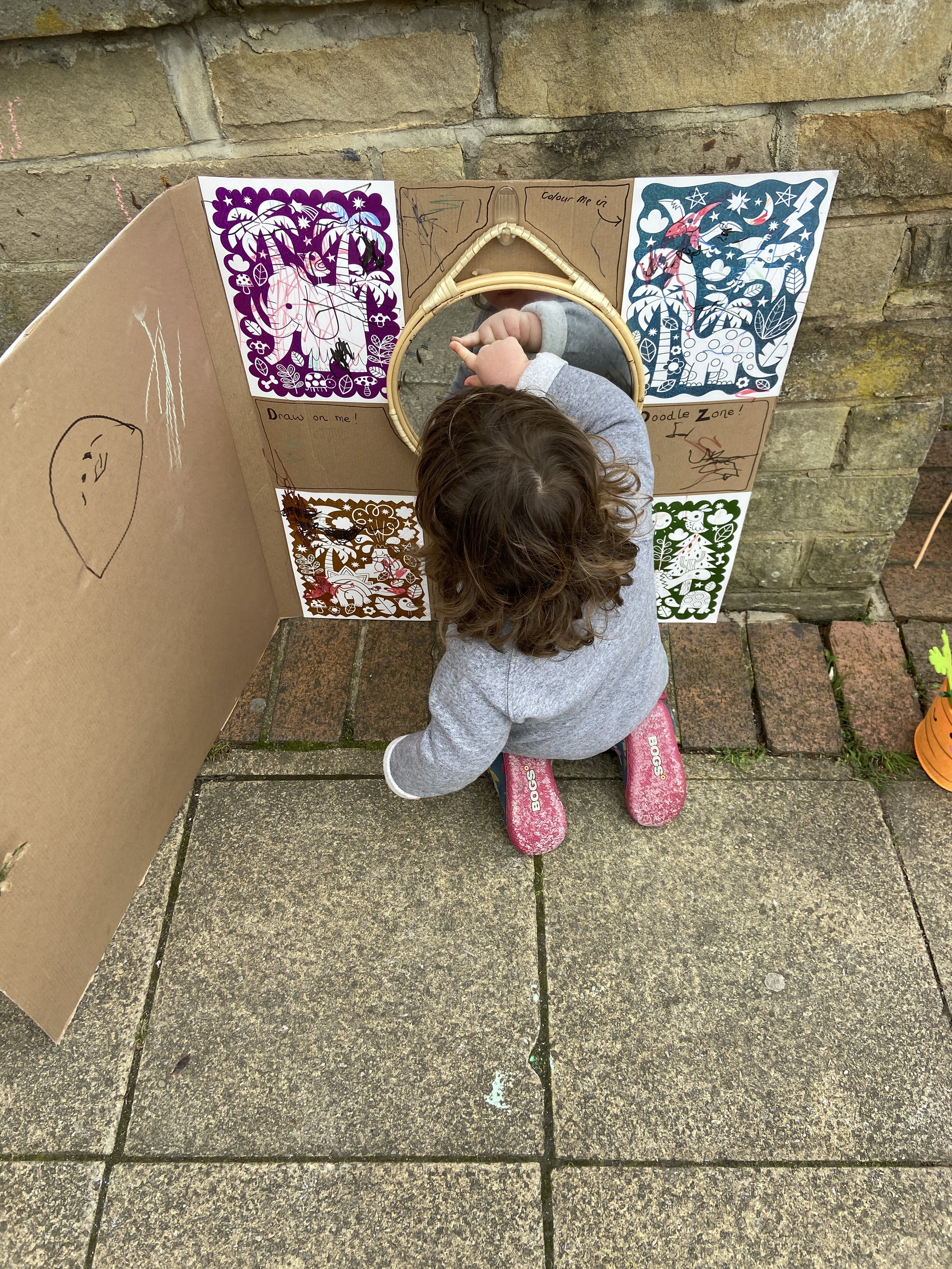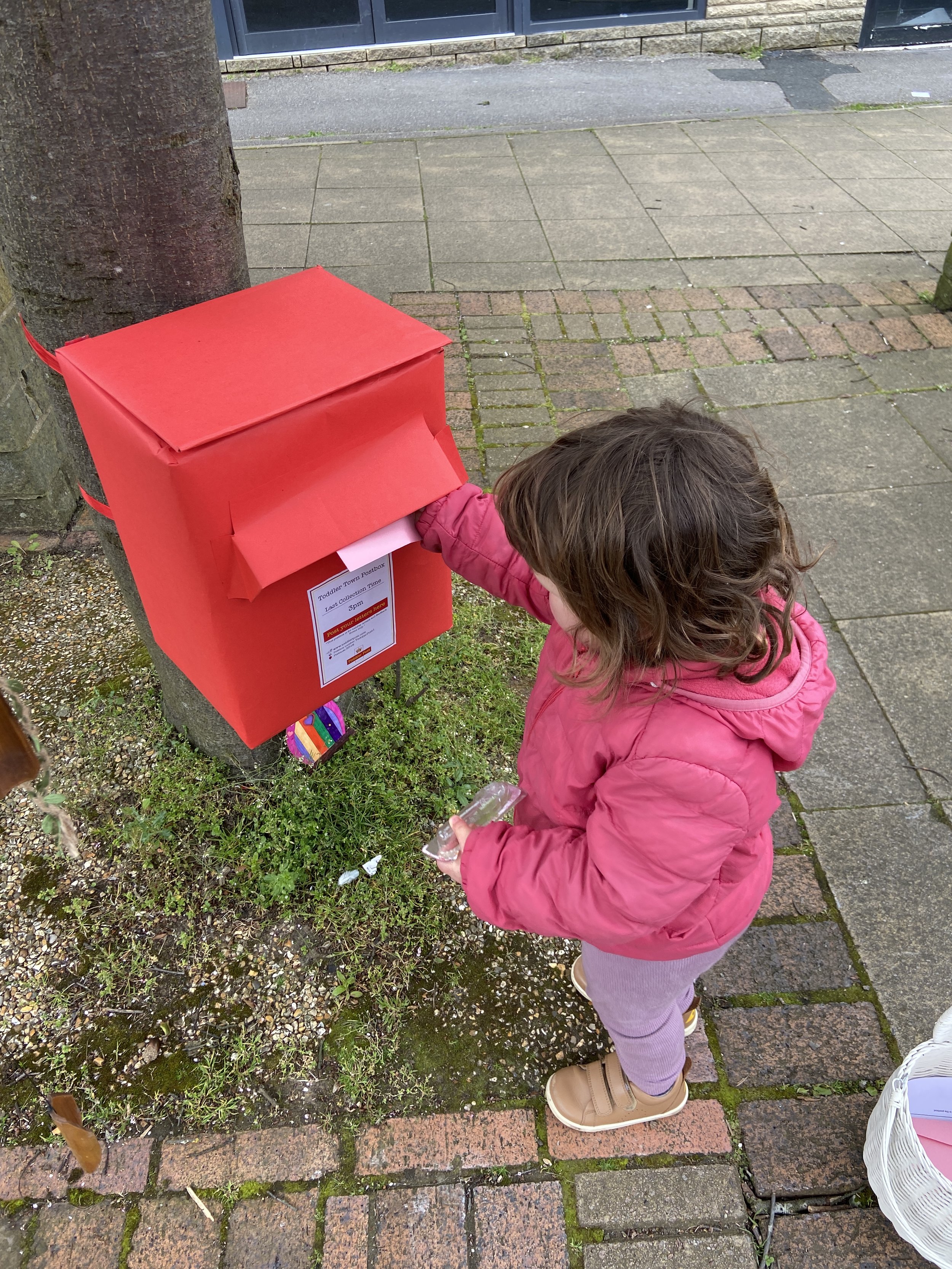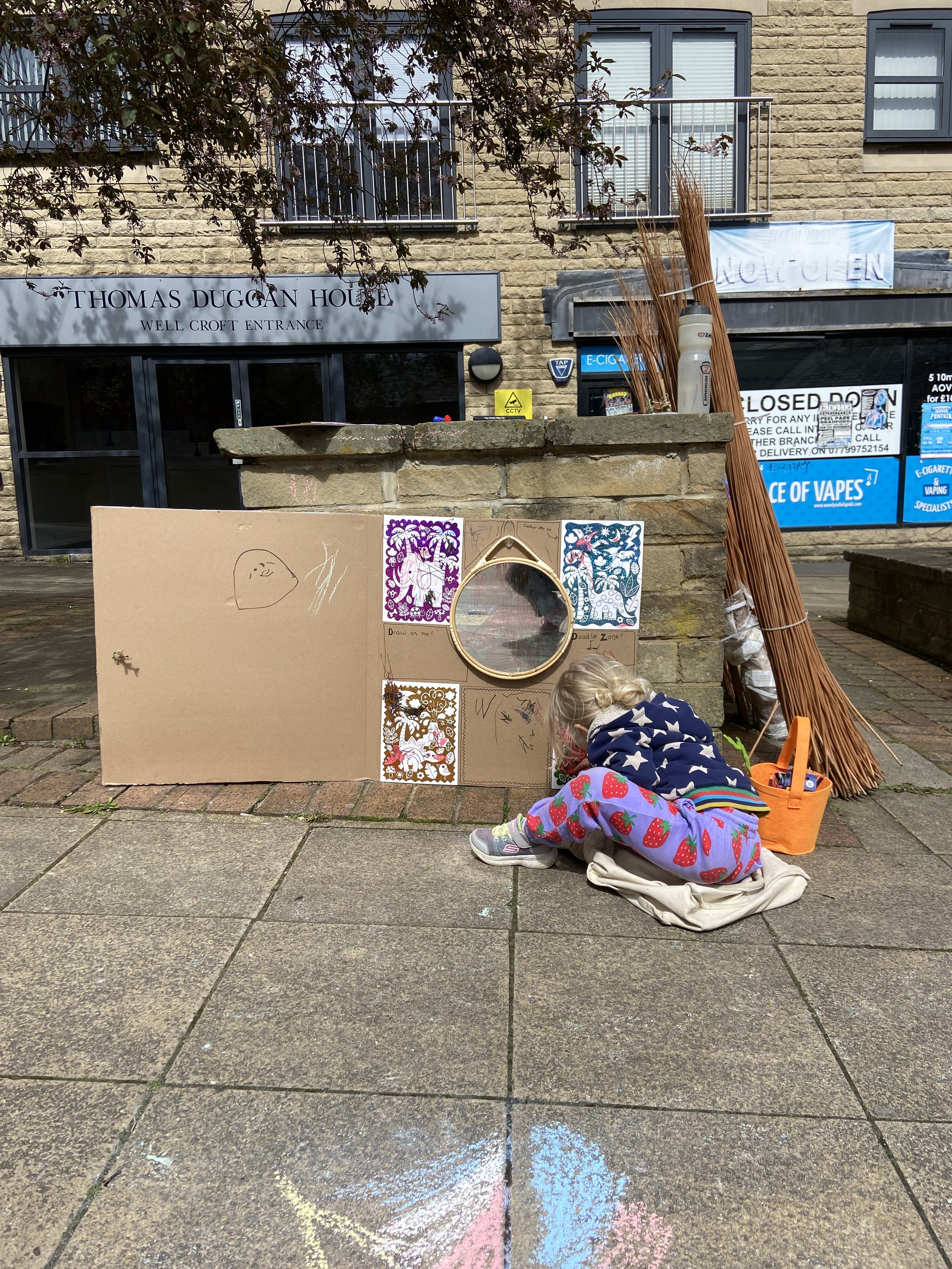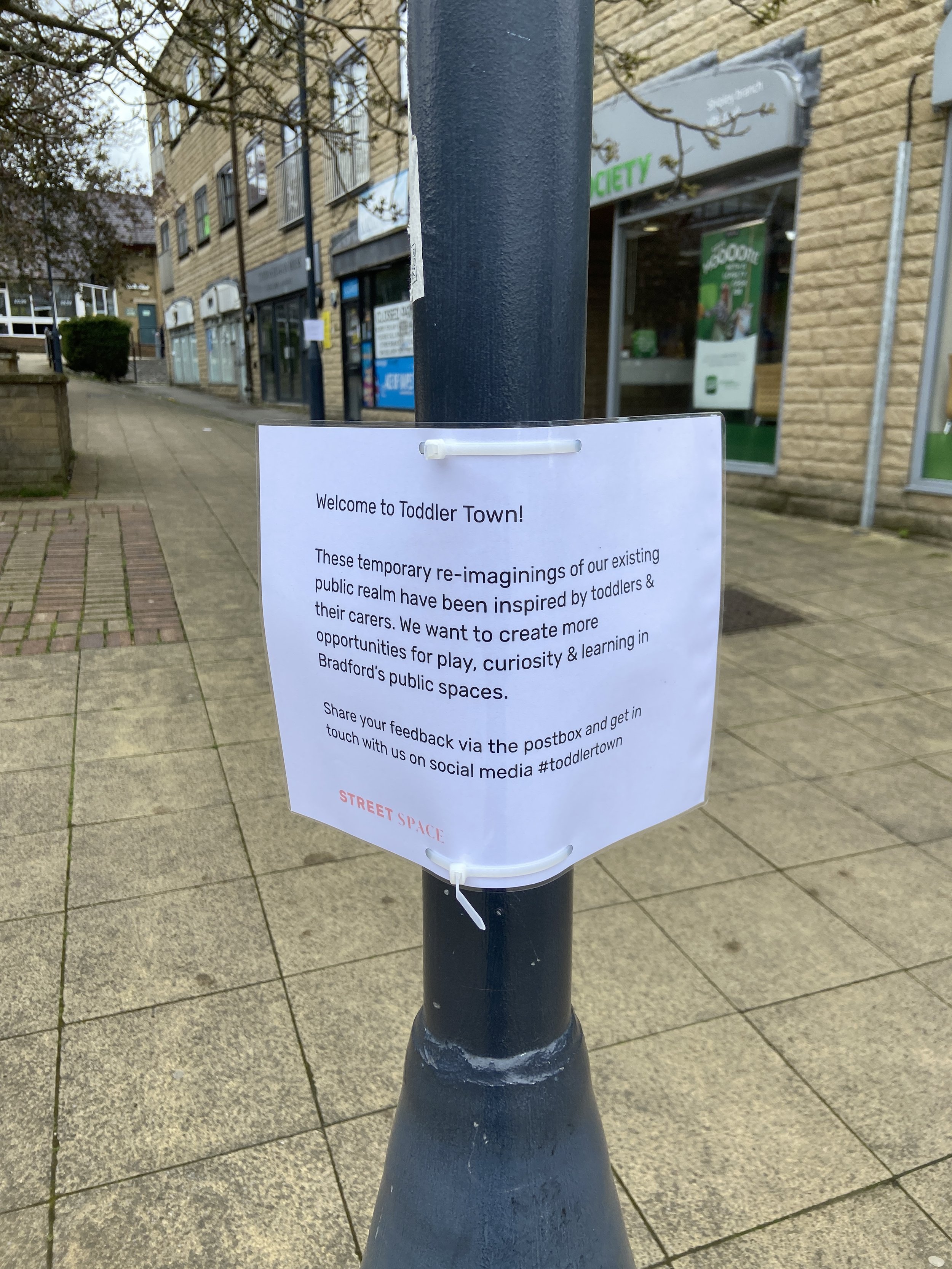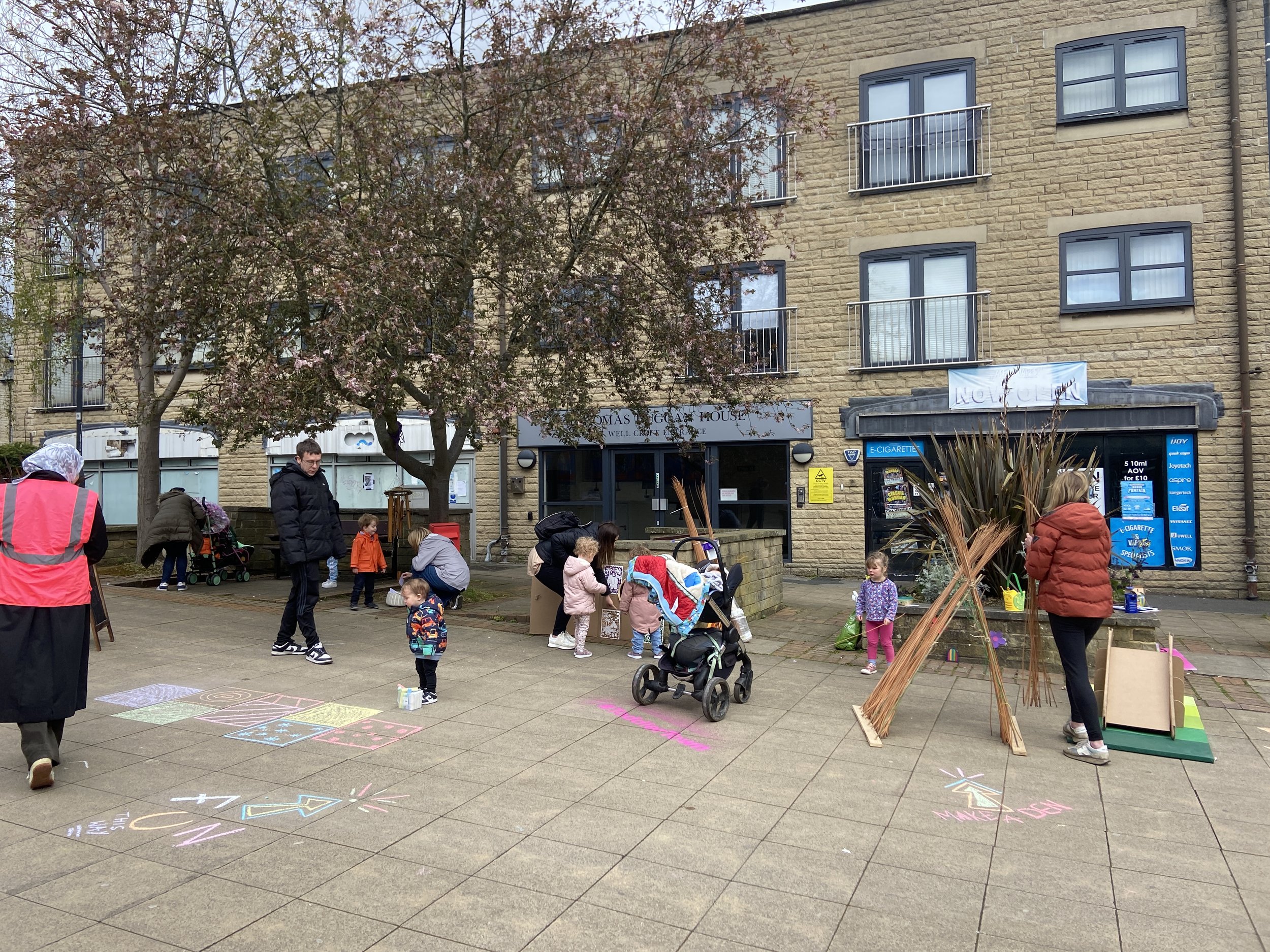The Hidden Benefits of Child Friendly Spaces
Anyone for hop scotch?
Last week we brought to life a series of experiments and ‘hacks’ in our town centre to explore the impact of creating a sense of permission to play in public space. Experiments or temporary re-imaginings as we like to call them, were loosely designed around the height of 95cm (the height of an average 3 year old) but this didn’t mean shorter (and taller) people couldn’t get involved!
Toddler Town has emerged out of Collective Imagination Practice seed funding and a Huddlecraft peer to peer learning journey exploring the question: What if we put toddlers at the heart of Shipley?
We took-over two loosely connected spaces in the central Shipley — outside the library, a large pedestrianised area with benches and trees that is very under-used and a space outside the swimming pool entrance steps and ramp. Activities were designed to inspire a new way of thinking about the potential of the space. Temporarily suspending the reality of it being a cold windy day in town we crouched down and drew with chalk on the stone slabs we previously just walked over, we smiled and jumped over hop scotch, looked for fairies at the base of trees and let our toddlers slide down a cardboard slide. The toddlers needed no encouragement, but it was the parent, carer and passer by faces we noticed seemed to be lifted up the most.
So what did we learn?
There is huge appetite for toddler friendly spaces (other than in playgrounds)
Parents, carers, childminders were super excited to stumble across an engaging child-friendly space in the centre of town where they could let their kids loose in a safe, pedestrianised environment.
Parents and carers want to connect with each other in a loose and unstructured way as part of daily life e.g. trip to the shops, library etc
We noticed parents striking up conversations with others in an informal, easy way that often baby or toddler activities or groups don’t always make space for.
The presence of little ones playing in public space brings joy to older people who wouldn’t normally be in playground spaces
Smiles were wide on the faces of older people passing through the space on witnessing the presence and play of little ones — something that is often shielded away in playground spaces. Many had a go on the chalk hop scotch and gleefully shared their own memories of playing out with us.
Centring play & children in the design of town centres could have huge benefit on the health of our high streets and provide more reasons for families to stick around locally and spend
Parents told us they actively looked for child-friendly reasons to stay in Shipley for longer, connecting up the existing attractors of the swimming pool and library with play on the way interventions makes sense for welcoming families, encouraging local spending and activating our high streets.
Parents are the ones who need to feel a sense of permission to let their children play in public
Learning from our toddler town collaborative design workshop focussed on the importance of parents feeling a sense of permission and invitation to let their children play in non traditional (playground) spaces. This intervention did just that whilst unlocking numerous co-benefits.
Creating more space for SOCIAL behaviour in under-used public spaces will reduce the risk of these spaces being dominated by ANTI-social behaviour e.g. quads etc
Like many town centres, Shipley is, at times, briefly taken over by balaclava wearing quad biking riders. Perhaps encouraging child-led ‘take overs’ of the same space could strike more of a balance — offsetting these occasional anti-social activities with more inclusive social activity.
Taking over a public space with a high footfall of children and families automatically creates a wonderful opportunity for mixing between families and communities that doesn’t usually happen in baby groups or classes that is more representative of the local population.
We noticed that the test gathered together families and children from all different backgrounds very naturally. At the heart of our town, these spaces are be default representative of the local population — it felt great to create a welcoming space where there was no financial or social barriers to entry — it was just there.
So what’s next?
This pilot study was funded by seed funding from the Collective Imagination Practice community. We’re going to take some time now to reflect on what we’ve found out and continue conversations locally about what possible next steps might look like. These could include:
sharing our findings to shape existing council plans for the town centre
convening up a town council working group focussing on child-friendly interventions
developing a funding application for more work and local partnerships in this area leading to the design and installation of longer term tests and play prototypes
something else?
If you’d like to get in touch to discuss this or any of our engagement and collaborative design work, please do — we’d love to hear from you!

